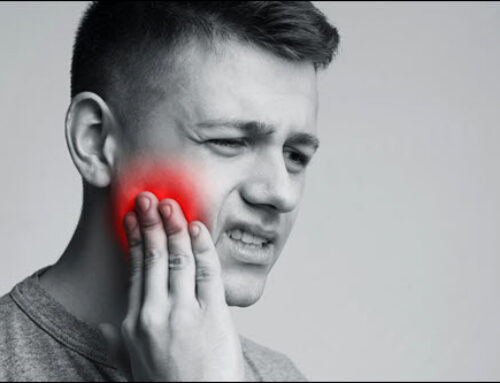Impacted teeth can cause discomfort and lead to more serious oral health problems if left untreated. Understanding the causes of impacted teeth and the available correction methods is essential for good oral health. It’s likewise important for preventing complications. Here’s a closer look at what they are, what causes them, and how they can be corrected.
What “Impacted Teeth” Means
 An impacted tooth is a tooth that fails to fully emerge through the gums. This condition most commonly affects the third molars, also known as wisdom teeth. But it can also occur with other teeth, such as canines and premolars. Impacted teeth can be partially impacted, where part of the tooth is visible. Or, they can be fully impacted, where the tooth remains entirely beneath the gum line.
An impacted tooth is a tooth that fails to fully emerge through the gums. This condition most commonly affects the third molars, also known as wisdom teeth. But it can also occur with other teeth, such as canines and premolars. Impacted teeth can be partially impacted, where part of the tooth is visible. Or, they can be fully impacted, where the tooth remains entirely beneath the gum line.
Causes of Impacted Teeth
Several factors can contribute to the development of impacted teeth, including:
- Lack of Space: One of the most common reasons for tooth impaction is a lack of space in the jaw. Consequently, when the jaw is too small to accommodate all the teeth, there is insufficient room for the teeth to emerge properly.
- Abnormal Tooth Position: Teeth can sometimes grow in abnormal directions or positions, which can lead to impaction. This occurs due to genetic factors or developmental issues.
- Overcrowding: Crowded teeth can prevent a tooth from erupting normally. Consequently, this is often the case with wisdom teeth, which are the last to erupt and may not have enough space to fit properly in an already crowded mouth.
- Delayed Eruption: Occasionally, a tooth may not erupt at the expected time, leading to impaction. This can occur due to genetic factors, hormonal imbalances, or other underlying medical conditions.
- Obstructions: The presence of cysts, tumors, or other growths in the jaw can physically block a tooth from erupting.
Correction and Treatment Options
The treatment for impacted teeth depends on the severity of the impaction, the symptoms it causes, and the potential for complications. Common correction methods include:
- Monitoring: In some cases, an impacted tooth may not cause any immediate problems. Dentists may choose to monitor the situation with regular check-ups and X-rays to ensure that no complications arise.
- Extraction: The most common treatment for impacted wisdom teeth is extraction. Removing impacted teeth can prevent pain, infection, and damage to surrounding teeth and bones. Your dentist uses local or general anesthesia, depending on the complexity of the procedure.
- Orthodontic Treatment: For impacted canines or other teeth, orthodontic treatment may be used to guide the impacted tooth into its correct position. This often involves using braces or other orthodontic appliances to create space and encourage proper eruption.
- Surgical Intervention: In cases where cysts or tumors obstruct a tooth, surgical removal of the obstruction may be necessary to allow the tooth to erupt.
- Pain Management and Infection Control: If an impacted tooth causes pain or infection, dentists may prescribe pain relievers or antibiotics to manage symptoms until a more permanent solution is implemented.
Impacted teeth are a common dental issue that can lead to significant discomfort and complications if not addressed. Understanding the causes of tooth impaction and the available correction methods can help individuals make informed decisions about their oral health. Regular dental check-ups and early intervention are key to preventing problems associated with them and ensuring a healthy, functional smile. If you suspect you have an impacted tooth, consult with a dental professional to explore the best treatment options for your situation.


